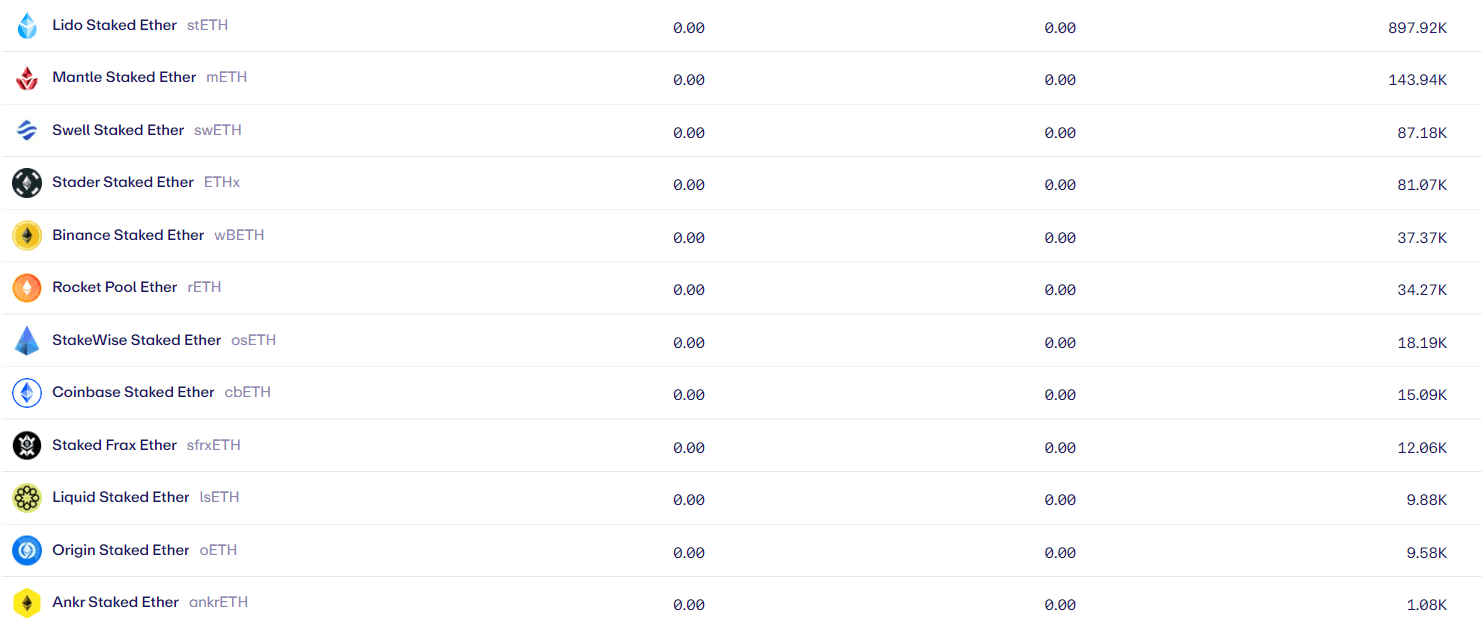DeFi’s New Darling: Looping with Isolated LRTs

“Looping” has quickly emerged as one of the most powerful strategies in decentralized finance (DeFi) for maximizing returns. At its core, looping involves leveraging assets through repeated cycles of depositing, borrowing, and redeploying effectively compounding yield opportunities. By recycling the same capital multiple times, users can amplify their exposure and, in turn, their potential rewards.
This practice is only possible because of DeFi’s unique features: programmability, interoperability, and true ownership of digital assets. Whenever you provide capital to a protocol whether by supplying liquidity to a pool, posting collateral, staking tokens, or engaging in restaking, you typically receive a receipt token that represents your position. Thanks to the composable design of DeFi, that receipt token isn’t locked in place; you own it and can redeploy into another protocol to provide liquidity, serve as collateral, or even be staked again. This recursive process is what gives rise to looping: a chain of capital deployments built on the same underlying funds.
As liquid restaking grows in prominence, Liquid Restaking Tokens (LRTs) are reshaping how looping strategies are executed. Unlike basket-based approaches, which bundle multiple assets together and can dilute risk-adjusted returns, isolated liquid restaking tokens (iLRTs) allow users to maintain clear, asset-specific exposure while still benefiting from the layered rewards of looping. This isolation creates more transparency, better risk management, and often superior yield accrual.
In this article, we’ll explore how looping with iLRTs offers a more precise, efficient, and resilient path to yield generation, and why it may become a cornerstone strategy in the next stage of DeFi innovation.
Looping with LRTs: The Basics
In DeFi, looping refers to a recursive strategy where assets are deposited, borrowed against, and then re-deployed multiple times to amplify potential returns. Rather than simply staking once and waiting for yield, looping uses the collateral value of existing positions to generate new ones, creating a compounding effect over successive cycles.
One of the forms of this strategy relies on liquid staking tokens (LSTs). For example, an investor might stake ETH and receive a derivative token representing that position. That token can then be posted as collateral to borrow additional ETH, which is staked again to mint more derivatives. By repeating this cycle, the user builds layered exposure and multiplies yield opportunities.
However, this leverage-driven approach is not without its drawbacks. Each new loop adds another layer of risk, as borrowed assets increase vulnerability to price volatility, liquidity shortages, and forced liquidations in the event of market stress. While looping can accelerate returns, it also magnifies downside scenarios, making risk management essential for anyone employing the strategy.
Loop Flows with LRTs and LSTs
For LSTs, a typical loop might look like this:
- Stake Ethereum (ETH) and receive an LST, such as stETH or rETH.
- Use the LSTs as collateral to borrow ETH.
- Stake the borrowed ETH to mint additional LSTs, creating a recursive cycle.
When working with LRTs, the flow differs:
- Borrow LRTs against existing LSTs.
- Restake LSTs to receive LRTs.
- Use the LRTs as collateral to borrow more LSTs, repeating the cycle.
Unlike LST looping, LRT looping provides access to additional yield streams through restaking rewards from Actively Validated Services (AVSs). The abstraction layer of liquid restaking also enables diversification of income sources, reducing dependence on a single asset and enhancing yield potential.
Why iLRTs Are Better Positioned for Looping
Isolated Liquid Restaking Tokens (iLRTs) represent a specific approach within liquid restaking. With iLRTs, each token corresponds directly to the asset type restaked, ensuring that users receive a distinct derivative for every individual asset deposited. This isolation makes positions easier to track and manage, while keeping risks tied to specific assets transparent.
By contrast:
- Native Liquid Restaking Tokens (nLRTs): Native restaking allows users to stake and restake ETH directly in a single step, removing LSTs from the process. While simple, this approach is less suitable for looping strategies, since it lacks the derivative tokens necessary for recursive borrowing.
- Basket-Based Liquid Restaking Tokens (bLRTs): Basket models aggregate multiple LSTs into a single token, creating exposure to a blended pool of assets. Although this can offer diversification, it also introduces complexity and reduces clarity. Asset-specific risks become harder to isolate, and returns from stronger-performing assets may be offset by weaker ones—a form of “cannibalization” that can undermine yield efficiency.

All Liquid Staking Token Options supported by EigenLayer (Source)
- Isolated LRTs (iLRTs): iLRTs are the preferred choice for looping, offering multiple advantages:
- Predictable Exposure: iLRTs provide exposure to a single underlying asset type, enabling users to optimize their strategies without worrying about the performance of a mixed basket of assets.
- Controlled Risk: The isolation of assets allows for better risk management, as users can avoid the potential pitfalls of pooled exposures.
- Maximized Yield: By focusing on a targeted restaking position, iLRTs allow for optimized yield maximization, especially when combined with additional yield streams from AVSs in Defi Looping strategies.
Future Evolvement of Looping with iLRTs
The emergence of Actively Validated Services (AVSs) is set to elevate the profitability of restaking, paving the way for more sophisticated looping strategies. AVSs in restaking provide the source of yield opportunities that can be tapped into Liquid Restaking protocols, which further optimizing returns for restakers iLRT holders. This effect is compounded by the intervention of AVS curators, which further maximize yield by careful selection and management of AVSs.
As DeFi protocols continue to evolve, several developments could support and develop iLRT looping strategies:
- New AVS Partnerships: Collaborations between AVS providers and restaking protocols could unlock new yield streams, enhancing the attractiveness of iLRTs.
- Protocol Upgrades: Future upgrades to restaking protocols may offer better terms for iLRT holders, such as lower fees or increased yield.
- Cross-Chain Looping: Innovations like cross-chain looping could allow users to loop assets across multiple blockchains, maximizing yield potential in diverse DeFi ecosystems.
Be in the Loop
As we’ve seen, iLRTs offer significant advantages for looping strategies over other approaches, enabling users to maximize yield through looping and restaking. By providing controlled exposure, optimized strategies, and increased transparency, Inception LRTs stand out as a superior solution for DeFi enthusiasts seeking to maximize their returns.

